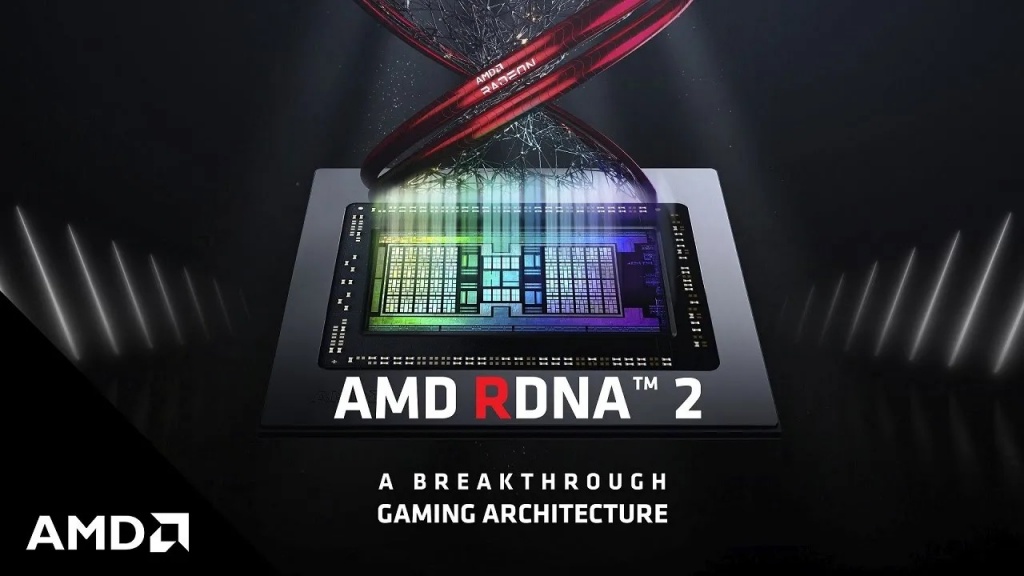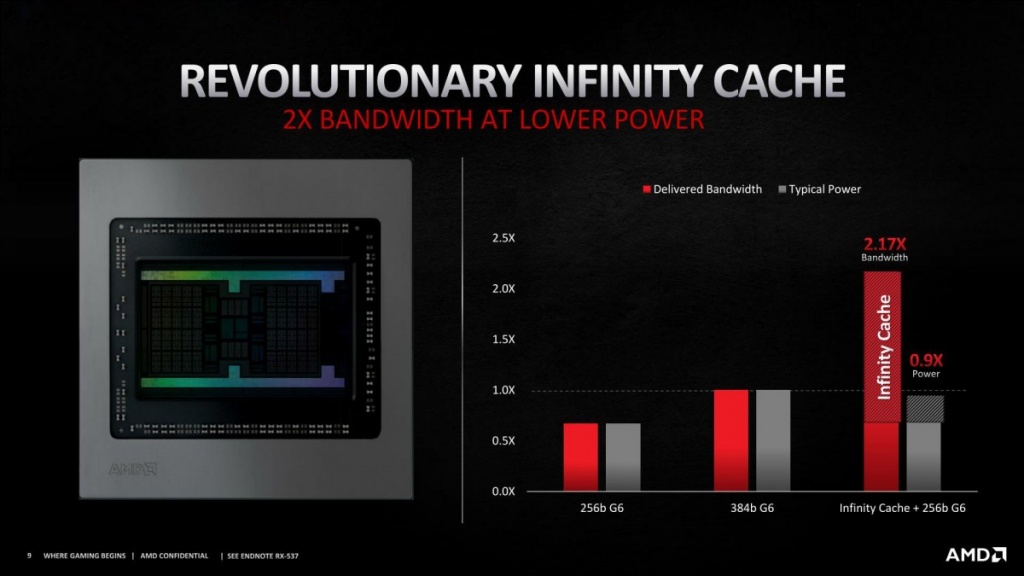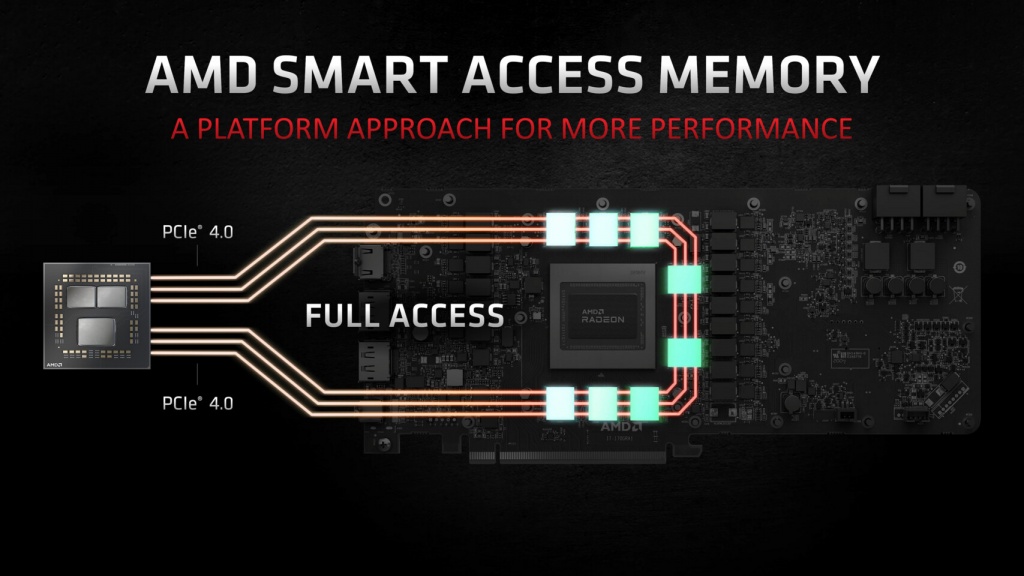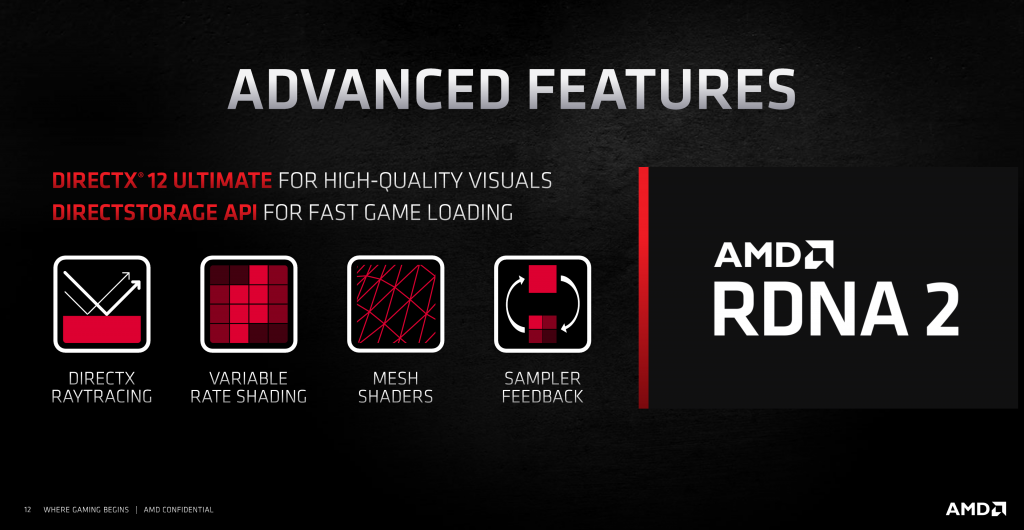It is no surprise that AMD comes into this generation as an underdog with more or less nothing to lose. AMD’s RDNA 1 offerings were competitive and put the company onto the correct path, but they still were not directly a threat to the top offerings from Nvidia. The fastest AMD card based on the RDNA 1 architecture was the Radeon RX 5700 XT which competed directly with the RTX 2060 Super in terms of pricing, but it punched well above its weight when it came to performance. Due to driver optimizations and a generally better GPU, the RX 5700 XT now competes directly with the RTX 2070 Super and in fact, beats it in many modern titles, all while being 100$ cheaper. This meant that the RDNA 1 based GPU was an obvious choice for many value-oriented gamers. RDNA 2 hopes to improve upon that formula and directly compete with the top offerings from Nvidia at the time; the RTX 3000 series of GPUs.
Competition with Nvidia
Nvidia announced three new graphics cards based on the brand new Ampere architecture that garnered massive hype and attention this year. The GeForce RTX 3090, RTX 3080, and RTX 3070 all deliver extremely solid performance for the price as compared to the Turing generation. AMD’s graphics cards this time hope to directly compete with the absolute best that Nvidia has to offer, something that has not happened in quite some time. According to AMD’s first-party benchmarks, the RX 6900XT competes directly with the RTX 3090 while being 500$ cheaper. Moreover, the RX 6800XT competes directly with the RTX 3080 while also being 50$ cheaper, and the RX 6800 delivers somewhat better performance than the RTX 3070 while being 80$ more expensive. Let’s see how AMD has managed to deliver such massive performance gains over just one generation.
RDNA 2 Process Node
AMD’s RDNA 2 architecture is still based on TSMC’s 7nm process just like RDNA 1. This is not necessarily a bad thing as RDNA 1 did provide massive efficiency gains over their older 12nm Vega architecture and has room for improvement as well. RDNA 2 hopes to take advantage of that room for improvement and promises up to 1.8X performance per watt improvement over RDNA 1 on the same process node. This translates to roughly double the performance within the same power target as the last generation, which is a commendable improvement over the original RDNA architecture.
Infinity Cache
One of the defining new features that has gotten the PC enthusiasts pretty excited is the introduction of a brand new caching system known as Infinity cache. Essentially, AMD has introduced a high-speed cache that complements the GDDR6 memory to effectively increase the bandwidth of the onboard VRAM. This infinity cache is supposed to bridge the gap between the GDDR6 memory that AMD is using, and the GDDR6X memory that is present in the RTX 3080 and RTX 3090 from Nvidia. The new G6X memory is supposed to have double the bandwidth of the standard G6 memory. In another surprising move, AMD is sticking with a 256-bit wide bus and is instead counting on this infinity cache to compensate for the decrease in bandwidth. AMD has claimed that its “revolutionary” infinity cache technology can effectively provide 2X the bandwidth as the normal 256-bit bus with GDDR6 memory, and thus can be an ideal solution for the difference in throughput between the two brands. This means that if AMD’s claims are true, then the G6 memory on the 256-bit bus coupled with the infinity cache would be significantly faster than G6 memory on a 384-bit bus. AMD also says that the infinity cache should help with minimizing DRAM bottlenecks, latency issues, and power consumption while also assisting with bandwidth.
Rage Mode
Controversial branding aside, AMD’s new Rage Mode feature can actually be quite helpful in increasing the performance of the new RX 6000 series graphics cards. Rage mode is basically a step below Auto-overclocking that is built into the Radeon Software (formerly Wattman) for these new graphics cards. Rage Mode does not attempt to “overclock” the particular card itself, rather it actually increases the power limit to the maximum value possible. This can be quite helpful for people not willing to dabble into overclocking themselves but wouldn’t mind a free bump in performance. Maxing out the power limit is not a new feature in-and-of-itself, but this is the first time that a manufacturer is including it into their first-party performance benchmarks itself, so this must be counted as a significant feature. Normally, increasing the power slider is usually the first step in manual overclocking and users can still do it in their software of choice with the RX 6000 series, but AMD’s implementation is sure to receive updates and optimizations to perfectly take advantage of the power headroom that’s available in these cards. Generally, increasing the power slider to its maximum nets around 50-100Mhz increase in the maximum sustained boost clock (called “game clock” by AMD) of the card, so it can translate to about 1-2% increase in performance under normal conditions. AMD warns that the improvements would be highly dependent on the game itself, so that is something to keep in mind as well. Rage mode will also increase the aggressiveness of the fan curve in order to keep the higher temperatures in check.
Smart Access Memory
Probably the most interesting and simultaneously polarizing feature of the RX 6000 series of graphics cards is the Smart Access Memory or SAM feature. This feature would only be available to users with a Ryzen 5000 series CPU, a 500 series motherboard, and a Radeon RX 6000 series graphics card. Smart Access Memory essentially allows the CPU to access the full amount of GDDR6 memory found on the RX 6000 series of graphics cards. Usually, the CPU only has access to the VRAM is 256MB blocks. The GDDR memory is traditionally much faster than the standard DDR memory that is used by CPUs normally. The Ryzen 5000 series of processors can access this faster memory and can thus deliver additional levels of performance. AMD presented a slide that shows that SAM can contribute to an increase in performance ranging from 2%-8% on average with some games delivering up to 12% more performance with both SAM and Rage Mode turned ON. This is the first time that a company has released a feature that unlocks additional performance depending on the accompanying hardware that the user possesses. This decision was met with a mixed response from the community, with half the people really excited for the extra performance that can now be leveraged with an All-AMD build, and half the people disappointed that AMD is locking out the extra performance to CPUs of the 5000 series only. Neither any Intel CPU nor any older Ryzen CPU can leverage the extra performance which can come as a disappointment to the users of those platforms looking to buy an RX 6000 series GPU. Nvidia was quick to jump into the situation with an announcement that it is currently working on a similar feature to Smart Access Memory for their RTX 3000 series of graphics cards, and it will be released soon in a driver update for those cards. Nvidia claims that the technology behind the SAM feature is a standard inclusion in the PCIe specification and that Nvidia’s alternative will work on both Intel and AMD CPUs with a wider selection of motherboards as well. Nvidia also claimed that their internal testing shows similar performance to AMD’s claimed performance using SAM.
Ray Accelerators
One of the most anticipated features for the RX 6000 series is the inclusion of real-time raytracing support. AMD is a generation behind Nvidia in implementing this feature as Nvidia introduced its RTX series of cards back in 2018 with full hardware raytracing capabilities, but it is finally here with the RX 6000 series of GPUs. The approach that AMD is taking is a bit different though. While Nvidia is using dedicated hardware Raytracing cores to handle the real-time raytracing, AMD is using Microsoft’s DXR implementation in its own way. Dedicated “RT Accelerators” are present in each compute unit, however, there is little to no information publicly available about said RT accelerators and what they actually are. AMD’s current approach to Raytracing does support everything that is covered via Microsoft’s DXR 1.0 and 1.1 versions, however, anything that is custom or proprietary to Nvidia RTX will not be supported on AMD’s version of raytracing. This is sort of a wild west approach to raytracing as it now introduces an additional factor into the question “Does this game support Raytracing?” as now we have to know which version of raytracing does the game actually work best with. More and more games should work well with AMD’s approach though, as the RDNA 2 GPUs inside the consoles also use a similar form of raytracing as AMD’s desktop graphics cards.
DLSS Competitor
DLSS or Deep Learning Super Sampling is one of the best features that came with the release of the RTX graphics cards in 2018. This feature smartly upscales an image that has been rendered at a lower resolution to provide much better performance with little to no loss in visual quality. We have already explained the ins-and-outs of DLSS in this article, but the long and short of it is, it is a great feature for gamers that delivers more FPS at roughly the same visual quality. AMD has currently no alternative to DLSS (which is Nvidia’s proprietary technology), however, it is planning to release an alternative soon. AMD claims that its alternative will perform similarly to DLSS but that would be interesting to test because unlike Nvidia, AMD has no hardware Tensor or Deep Learning cores to compute all that upscaling information. Nvidia also uses a supercomputer to handle most of the computations regarding DLSS which it then communicates to the graphics card and enables the upscaling features. It does not seem like AMD will go down that route at this point in time.
Competing with the very best
Whether AMD wins or loses against Nvidia, it is clear that the actual winners in this generation are actually the gamers. AMD is finally competing at the very high-end with Nvidia. It is hard to even remember the last time that they had the highest-performing single GPU on the market. Nvidia has been pretty dominant in this department and, unlike Intel, they have not been complacent either. AMD is giving strict competition to Nvidia for this generation and that leads to more choices and options for the gamers. If AMD manages to optimize its Raytracing performance and deliver a solid DLSS competitor, they might even make a more compelling option for gamers than Nvidia’s top offerings. Meanwhile, gamers on older AMD cards like the RX 400 or 500 series or RX Vega cards will enjoy a massive jump in performance and quality-of-life features if they choose to upgrade to the RDNA 2 based cards.
Final Words
AMD’s RDNA 2 architecture took the existing solid baseline set by the RDNA architecture and improved upon it significantly, adding quality features like Raytracing support, Rage mode, and Smart Access Memory along the way. These features make the RX 6000 series of cards an extremely competitive option to Nvidia’s top offerings, and with some further optimization in the raytracing department, AMD might even take the overall lead in pure gaming performance. Overall, this generation is a win for the gamers as this competition between Nvidia and AMD is leading to the release of extremely solid products from both sides at competitive prices.
AMD Zen 3 Architectural Improvements: ExplainedGDDR6X Technical Improvements ExplainedAMD RDNA2 ‘Big Navi’ Graphics Cards Get ‘Infinity Cache’ To Reduce Latency And…AMD Unveils Specifications For Ryzen 7000 RDNA2 Based iGPUs



